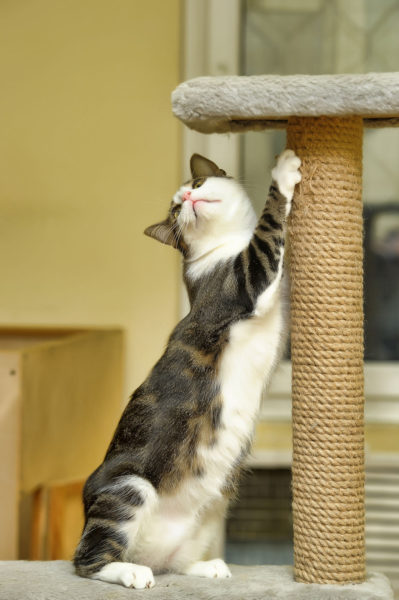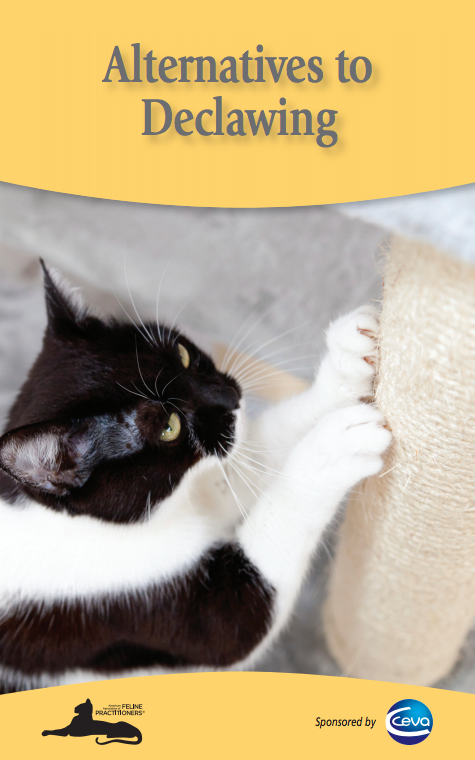
It can be frustrating and even expensive if your cat scratches your furniture or carpets. However, it is important to understand that scratching is a normal behavior for all cats, and serves important functions as well.
Cats Scratch for a Variety of Reasons
- To maintain the necessary claw motion used in hunting and climbing, as well as a way to stretch their body.
- A means of communication between cats, leaving both scent and visible markers to demonstrate that this is their territory.
- To keep their nails well-groomed, remove the old nail sheaths, and expose the new nail growth inside.
So, instead of trying to get your cat to stop scratching, train her to use a scratching post or cat tree that is acceptable to you – and your cat!
Other Important Tips to Keep in Mind
Regular nail trimming
By regularly trimming your cat’s nails, you can prevent injury and damage to household items. Visit our nail trimming page for tips.
Synthetic facial pheromone sprays/diffusers
If your cat continues to scratch on undesired objects, she may be stressed, anxious, seeking attention, or indicating that she does not feel secure in her environment. Anxiety can be intensified by punishment, which can cause your cat to increase her undesired scratching behavior. Consider trying synthetic facial pheromone sprays and/or diffusers to help relieve your cat’s anxiety or stress.
- First, make sure to clean the objects or areas with soap and water to remove the communication marking scents left by your cat’s paws.
- Then apply the product on objects or areas in your home where your cat has exhibited undesired scratching.
- Apply daily comforting pheromones to help prevent your cat’s need to mark these areas again. The product should not be sprayed on the desired scratcher you want your cat to use.
Appropriate environmental enrichment
Make sure you provide your cat with an enriching environment so she has appropriate objects to scratch and play with in your home. Destructive scratching can occur if your cat’s needs have not been fully met.
Temporary synthetic nail caps
These can be glued over your cat’s nails and usually need to be reapplied every 4-6 weeks, therefore they may be a less desirable alternative to the other methods listed here.
Rewards and positive reinforcement
Remember that your cat learns best through positive reinforcement. As you are redirecting your cat to use her new scratching post or pad, make sure you give your cat a reward immediately (within 3 seconds) to reinforce the positive behavior. It is important to remember that you need to find a reward that your cat likes. Examples include treats, catnip, interactive play, and petting or grooming.
Continued scratching by cats may be related to stress, anxiety, attention seeking, or perceived lack of security in their environment. Please speak with your veterinarian to discuss your concerns, advice for your cat’s situation, and to develop an appropriate plan for your household.


